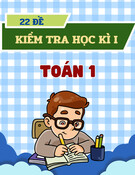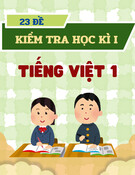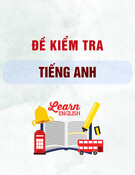
TRƯỜNG CD VĂN HÓA NGHỆ THUẬT VÀ DU LỊCH SÀI GÒN
ĐỀ THI ANH VĂN NGÀNH THÔNG DỊCH VIÊN ANH-PHÁP 2009 –
2010
THỜI GIAN: 90 PHÚT
Discussion
1. Americans believe strongly in self-reliance and t he freedom of individual. At
what age do young people become financially and emotionally independent
from their parents in your count ry? At w hat age do they leave home?
2. Is it a good thing for 18-year-olds to leave t heir parents’ home to lead an
independent life? What are t he advantages and disadvantages? What
is your choice? As a parent would you like your children to leave home at
18?
3. Is it healt hy for a young person to want to compete? W hich is more
important, compet ing or cooperating? W hich does your culture value more?
Why?
4. Choose one basic American value you find most influential in
contemporary
Viet namese society and analyze its effects on your life.
5. Americans believe strongly in self-reliance and t he freedom of individual. At
what age do young people become financially and emotionally independent
from their parents in your count ry? At w hat age do they leave home?
6. Is it a good thing for 18-year-olds to leave t heir parents’ home t o lead an
independent life? What are t he advant ages and disadvantages? What
is your choice? As a parent would you like your children to leave home at
18?
7. Is it healthy for a young person to want t o compete? Which is more
important,

compet ing or cooperating? W hich does your culture value more? W hy?
8. Which American value are you most impressed?
Comprehension Check
True or False?
1. The United States has diversity just in its climate and geography.
2. The United States has 48 states lying in t he central of t he Nort h
American cont inent .
3. The t wo states were added t o the United States in 1959 are not sit uat ed
in Nort h
America.
4. The American population is not only one of the world’s largest but also
various in its origins.
5. The largest minority group in t he United States is the white.
6. All t he Americans speak English wit h t he same accent.
7. The Californians are not as conservative as the M id-Westerners.
8. M odern t ransportation and communicat ion help erase all regional
differences.
9. It is impossible to make generalizations about t he United States because
it is t he land of diversity.
10.
The typical American is third- generation, Hispanic, urban, and rich.
11.
“ No one should have to see America for t he first time” means visitors need
several visits to America to understand this very big and different land.
Discussion
1. What different et hnic groups are t here in your country? Where do they
live? How are they different from the majority of people in your
count ry: Language? Clot hing? Food? M usic? Cust oms? Tell about an

interesting custom or t radition of t heirs.
2. Would you like to live and work in mult i-cult ural environment? Discuss
about the advantages and disadvantages of living in a count ry of great
ethnic diversity like the USA.
3. Would you like to work in a company of all-Viet namese staff or one
of int ernational staff?
Overview of U.S.
H
i
sto
r
y
Ten Periods of US History
1. 1492 - Christopher Columbus discovered North America.
1500s - European settlers came to the new land for gold,
adventures, and freedom.
1600s - The colonists lived under British laws.
2. 1775 - Americans in the thirteen colonies w anted to be free of
British rule. General
George Washingt on led the colonists in the Revolutionary War.
1776 - Thomas Jefferson wrote the Declaration of Independence,
and the colonies approved it.
3. 1783 - The American colonists won the war, and the colonies
became the United
States of America.
1789 - The Constitution became the highest law of the land.
1789 - George Washington became the first President.
4. 1840s - M illions of Europeans came to America as workers during
the Industrial

Revolut ion. The new nation grew and added more states.
1853 - The USA expanded to the Pacific Ocean.
5. 1861 - Americans fought against one another in the Civil War
between the North and the South.
1863 - President Abraham Lincoln freed the slaves in the
Emancipation
Proclamation.
1865 - The northern states won the war, and the period of
Reconstruction began.
6. 1917 - The US grew to be one of the great powers in the world.
The nation fought in the First World War.
1920 - After the war w omen got the right to vote for t he first time.
7. 1929 - The Great Depression began w ith the stock market crash.
Banks, fact ories, and farms shut dow n, and many Americans were
unemployed.
1933 - President Franklin Roosevelt helped end the Depression with
the New Deal government.
8. 1941 - The United States entered the Second World War w hen
Japans attacked the
Hawaiian Islands.
1945 - The war ended when the US dropped the first atomic bomb,
and the world entered the Nuclear Age.
9. 1950s - The US entered a time of Cold War. America fought in the
Korean War.
The Civil Right M ovement began, and black and white Americans
fought against segregation.

10.
1960s - The Space Age began. Americans fought in the Vietnam
War. The
United
States put the first men onto the moon in the Apollo Program.
1970s - The Women’s Liberation M ovement became strong.
1980s - Computers began to change the nation faster than ever before
Comprehension
Check
I/ Read the section “Overview of US History” and write the dates
from the box.
1853 1955 1969 1492 1776 1919 1789 1929 1863 1941
1. Columbus discovered North America. .
2. The colonies approved the Declaration of Independence. .
3. The Constitution became t he law of the land. .
4. The United States expanded to the Pacific Ocean. .
5. President Abraham Lincoln freed t he slaves. _ .
6. The First World War ended. .
7. The Great Depression began. .
8. The US entered the Second World War. .
9. The Civil Right M ovement began. .
10.
The US put the first man on the moon.






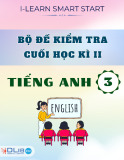



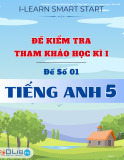

![Đề thi Tiếng Anh có đáp án [kèm lời giải chi tiết]](https://cdn.tailieu.vn/images/document/thumbnail/2025/20250810/duykpmg/135x160/64731754886819.jpg)
